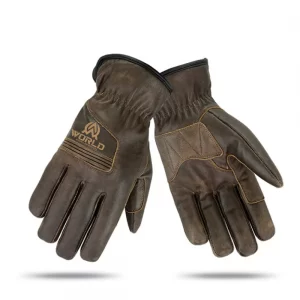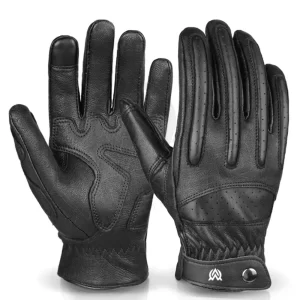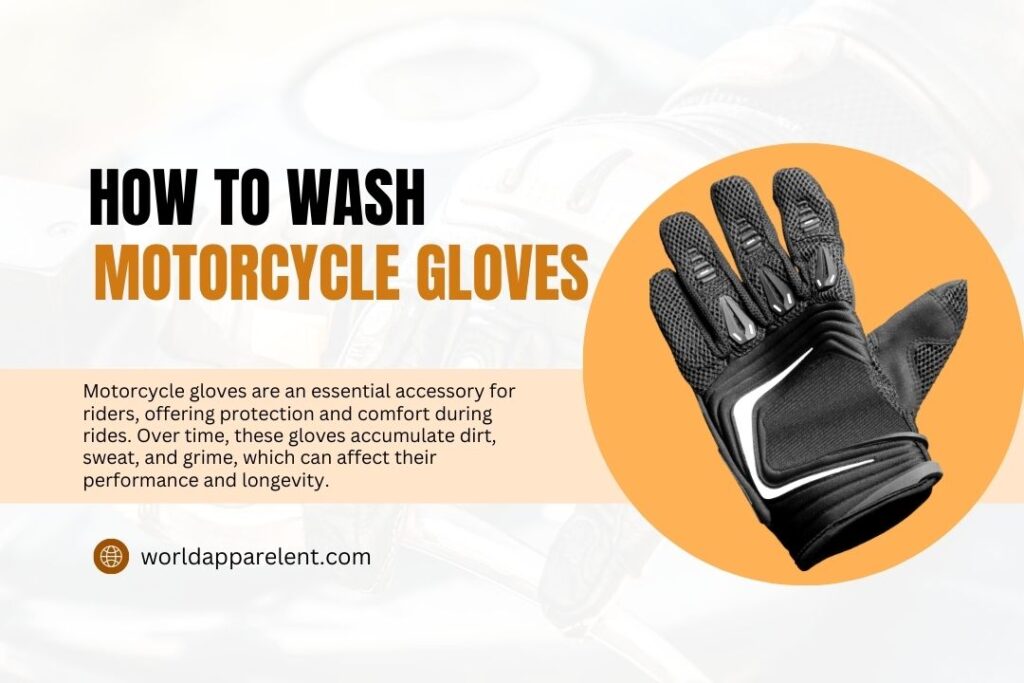Motorcycle gloves are an essential accessory for riders, offering protection and comfort during rides. Over time, these gloves accumulate dirt, sweat, and grime, which can affect their performance and longevity. Regularly washing your motorcycle gloves not only keeps them clean but also ensures their durability and functionality. In this article, we will guide you through the process of effectively washing your motorcycle gloves, allowing you to maintain their quality and prolong their lifespan.
Introduction
When it comes to riding motorcycles, safety is of utmost importance. One aspect that is often overlooked is the cleanliness and maintenance of motorcycle gloves. Clean gloves provide better grip, reduce odor, and contribute to an overall enjoyable riding experience. Additionally, washing your gloves helps eliminate bacteria and allergens that may have accumulated over time. By following a few simple steps, you can ensure that your gloves remain in excellent condition.
Types of Motorcycle Gloves
Before diving into the washing process, it’s essential to understand the different types of motorcycle gloves available. Each type has its unique features and materials, which may influence the washing method.

The three main types of motorcycle gloves are:
Full-fingered gloves
Full-fingered gloves provide maximum protection by covering the entire hand and fingers. They are commonly made from durable materials like leather, offering excellent abrasion resistance.
Gauntlet gloves
Gauntlet gloves extend beyond the wrists and provide additional protection to the lower part of the arm. They are often preferred by riders seeking enhanced safety and protection.
Short cuff gloves
Short cuff gloves are shorter in length and provide a more casual look. They offer flexibility and ease of use, making them a popular choice among urban riders.
Materials Used in Motorcycle Gloves
Motorcycle gloves come in various materials, each with its own set of cleaning requirements.

The most common materials used in motorcycle gloves are:
Leather gloves
Leather gloves offer superior durability and flexibility while providing excellent grip and protection. Cleaning leather gloves requires special care to avoid damage and maintain their quality.
Textile gloves
Textile gloves are often made of synthetic materials like nylon or polyester. They are lightweight, breathable, and provide good flexibility. Cleaning textile gloves is relatively easier compared to leather gloves.
Mesh gloves
Mesh gloves are designed for enhanced ventilation, making them suitable for warm-weather riding. They are constructed using a mesh fabric that promotes airflow. Cleaning mesh gloves requires attention to prevent any damage to the delicate mesh structure.
Preparing for Washing
Before you start washing your motorcycle gloves, it’s important to prepare properly. Here are the steps to follow:
- Checking the care instructions: Carefully read the manufacturer’s instructions provided with your gloves. They often include specific guidelines on washing methods and any precautions to take.
- Gathering necessary supplies: Collect the required supplies for washing, such as mild detergent, a soft brush or sponge, clean water, and a towel or drying rack.
Hand Washing Method
Hand washing is generally recommended for most types of motorcycle gloves, especially those made of leather.
Follow these steps to hand wash your gloves:
- Cleaning the exterior: Fill a basin or sink with lukewarm water and add a small amount of mild detergent. Submerge the gloves and gently agitate them to loosen any dirt or grime. Pay attention to areas with stains or visible dirt and use a soft brush or sponge to scrub gently.
- Washing the interior: Turn the gloves inside out and repeat the cleaning process for the interior. Pay attention to areas that come into direct contact with your skin, as they may accumulate sweat and oils. Rinse the gloves thoroughly to remove any soap residue.
- Rinsing and drying: Rinse the gloves under clean water to ensure all detergent is removed. Squeeze out excess water gently, being careful not to twist or wring the gloves. Place them on a towel or a drying rack in a well-ventilated area to air dry. Avoid direct sunlight or heat sources, as they can cause damage to the gloves.
Machine Washing Method (if applicable)
Some motorcycle gloves, particularly those made of textile materials, may be suitable for machine washing. However, it’s crucial to check the manufacturer’s instructions before using this method. If machine washing is recommended,
follow these guidelines:
- Using a gentle cycle: Place the gloves in a mesh laundry bag to protect them during the wash cycle. Set your washing machine to a gentle or delicate cycle with cold water. Avoid using hot water or high spin speeds, as they can damage the gloves.
- Selecting appropriate detergent: Use a mild detergent specifically formulated for delicate fabrics. Avoid using bleach or harsh chemicals, as they can deteriorate the materials and affect the gloves’ performance.
- Drying and storage: After the machine wash cycle is complete, remove the gloves from the laundry bag and gently reshape them. Air dry the gloves by placing them on a towel or drying rack in a well-ventilated area. Again, avoid direct sunlight or heat sources.
Drying and Storage
Proper drying and storage are essential to maintain the integrity of your motorcycle gloves.
Follow these tips:
- Air drying the gloves: Allow your gloves to air dry completely. Avoid using a dryer, as high heat can cause shrinkage or damage the materials.
- Avoiding direct sunlight or heat sources: Place the gloves away from direct sunlight or heat sources like radiators or heaters. Excessive heat can cause the materials to become brittle or warp.
- Storing gloves properly: When your gloves are completely dry, store them in a cool, dry place. Avoid folding or crushing them, as this can lead to creases or deformities. Consider using a glove-specific storage bag to protect them from dust and maintain their shape.
Maintenance Tips
To ensure the longevity and optimal performance of your motorcycle gloves, follow these maintenance tips:
- Regular cleaning schedule: Establish a routine for cleaning your gloves based on how frequently you use them. Regular cleaning prevents the buildup of dirt, sweat, and odor.
- Avoiding harsh chemicals: Use mild detergents specifically designed for delicate fabrics when washing your gloves. Harsh chemicals can degrade the materials and compromise their integrity.
- Treating stains promptly: Address any stains or spots on your gloves as soon as possible. Use a gentle stain remover or spot cleaning method recommended for the glove’s material. Prompt treatment helps prevent permanent discoloration.
Extending the Lifespan of Motorcycle Gloves
To maximize the lifespan of your motorcycle gloves, consider the following practices:
- Proper storage when not in use: When you’re not wearing your gloves, store them in a clean and dry location. Avoid placing heavy objects on top of them or exposing them to extreme temperatures.
- Using glove liners: Consider using glove liners to minimize direct contact between your skin and the gloves. Liners can absorb sweat and oils, reducing the need for frequent glove washing.
- Applying leather conditioner (if applicable): If your gloves are made of leather, use a leather conditioner periodically to keep the material supple and prevent it from drying out or cracking. Follow the manufacturer’s instructions for application.
Safety Considerations
While washing your motorcycle gloves, it’s important to consider safety measures:
- Checking for damage or wear: Before washing, inspect your gloves for any signs of damage, such as tears, loose stitching, or worn-out areas. If you notice significant damage, it may be time to replace your gloves.
- Replacing gloves when necessary: Motorcycle gloves have a limited lifespan due to wear and tear. If you notice a decrease in their protective capabilities, such as reduced grip or compromised seams, consider replacing them to ensure your safety.
Conclusion
Properly washing your motorcycle gloves is crucial for maintaining their cleanliness, performance, and longevity. Whether you have leather, textile, or mesh gloves, following the appropriate cleaning methods ensures that they remain in excellent condition. Remember to check the care instructions provided by the manufacturer and handle your gloves with care. By incorporating regular cleaning and maintenance into your routine, you can enjoy comfortable and safe rides for years to come.
Frequently Asked Questions (FAQs)
FAQ 1: Can I wash my motorcycle gloves in the washing machine?
Some motorcycle gloves can be washed in the machine, but it’s important to check the manufacturer’s instructions first. Leather gloves usually require hand washing.
FAQ 2: Can I use regular laundry detergent for washing my gloves?
It’s best to use mild detergents specifically formulated for delicate fabrics. Harsh detergents can damage the materials of your gloves.
FAQ 3: How often should I clean my motorcycle gloves?
The frequency of cleaning depends on how often you use your gloves and the conditions in which you ride. As a general guideline, aim to clean them every few weeks or when they become noticeably dirty or odorous.
FAQ 4: Can I dry my gloves in a dryer?
No, it’s not recommended to dry motorcycle gloves in a dryer. High heat can shrink or damage the materials. Instead, air dry them in a well-ventilated area.
FAQ 5: Are there any special precautions for leather gloves?
Leather gloves require special care. Avoid using harsh chemicals or exposing them to excessive moisture. Apply a leather conditioner periodically to maintain their suppleness and prevent drying out.

